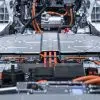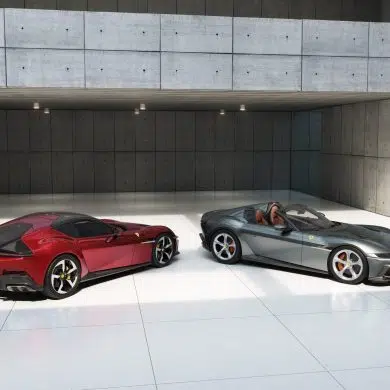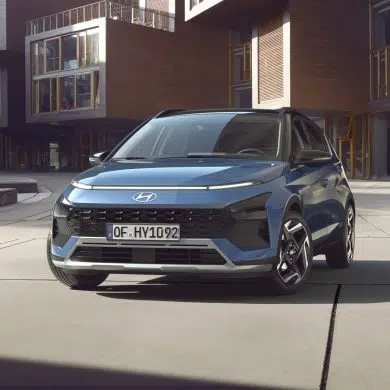You're on your way to a friend's house. It's a hot and sunny day - an unusual event for Greece - and you need to cool down your car's cabin, which is boiling. To do this, normally all that is required is to turn the rotary switch, or press the button on the air conditioner. This simple task for you, for engineers is a complicated puzzle. Because even this simple action requires close attention to detail and redefining how you keep the heat away from you.
During the development of the all-new Nissan Ariya electric crossover, the designers and the engineers not only took into account the ergonomics that the approach of the dashboard. They were determined to create a new look and feel for the control systems, which drivers generally consider data. This required a rethinking of the cabin space, in terms of Touch and the positioning of the individual elements.
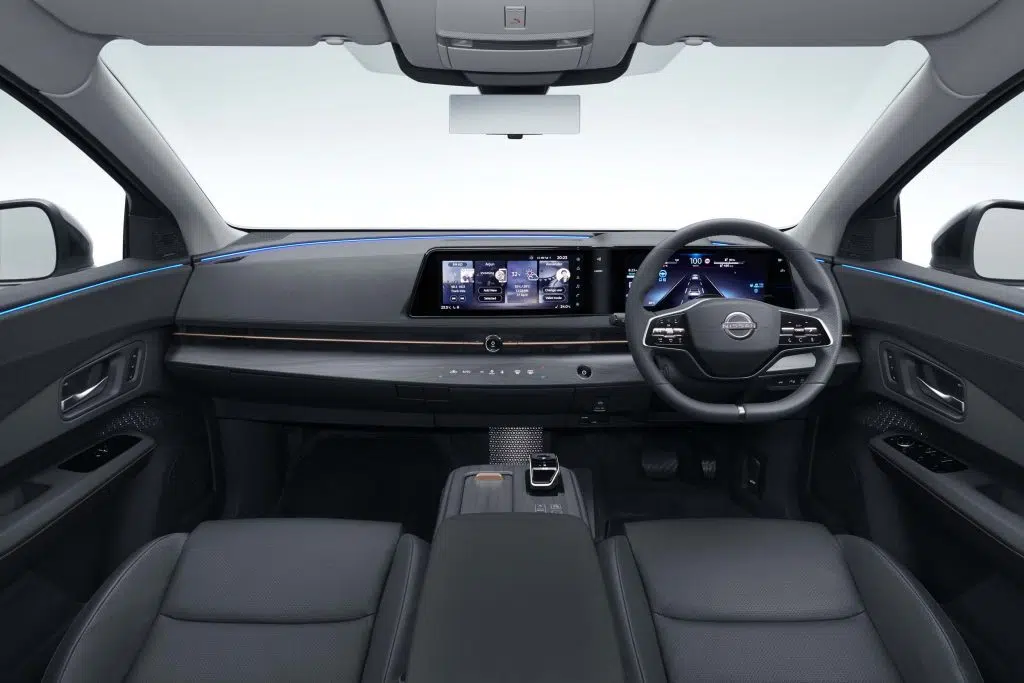
The "secrets" inside Ariya
The interior of Ariya was designed to be a open, spacious cabin that offers a a sense of calm and peace. Part of this planning is the dashboard without traditional buttons. The elegant wooden finish that "bisects" the board, comes to life with the start of Ariya, illuminating a set of environmental controls located just outside the down from the surface of the dashboard. Using a new generation of haptic feedback controls, these discreetly integrated buttons, open a world of possibilities the relationship between operation and design.
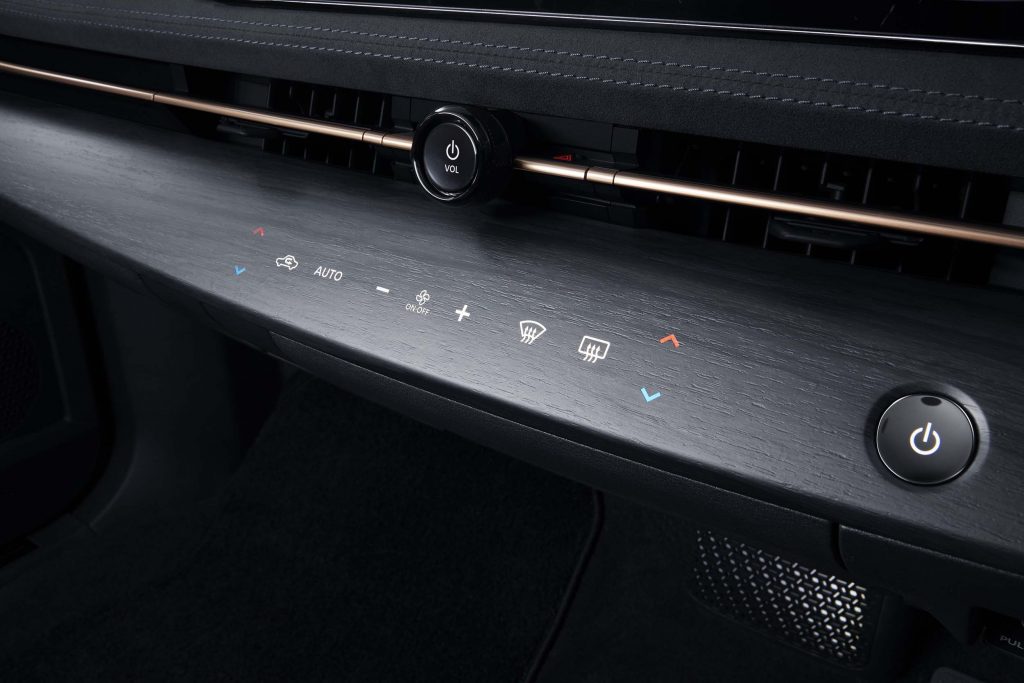
In the same way that we use the screen of a smartphone for navigating and interacting with apps, the haptic feedback buttons on Ariya react to touch, communicating through vibrations in the fingers. During the customization of controls air conditioning and driving functions of the Ariya, drivers will interact with a relevant set of icons. Still, because the interaction points are perceived with the sense and hearing, drivers can stay focused on the road.
The decision of the design team to incorporate the haptic feedback to Ariya, reflects the basic design concept of the car for the Timeless Japanese Futurism (Timeless Japanese Futurism), characterized by a distinctive Japanese approach and embodied in a simple, but at the same time powerful and modern way.
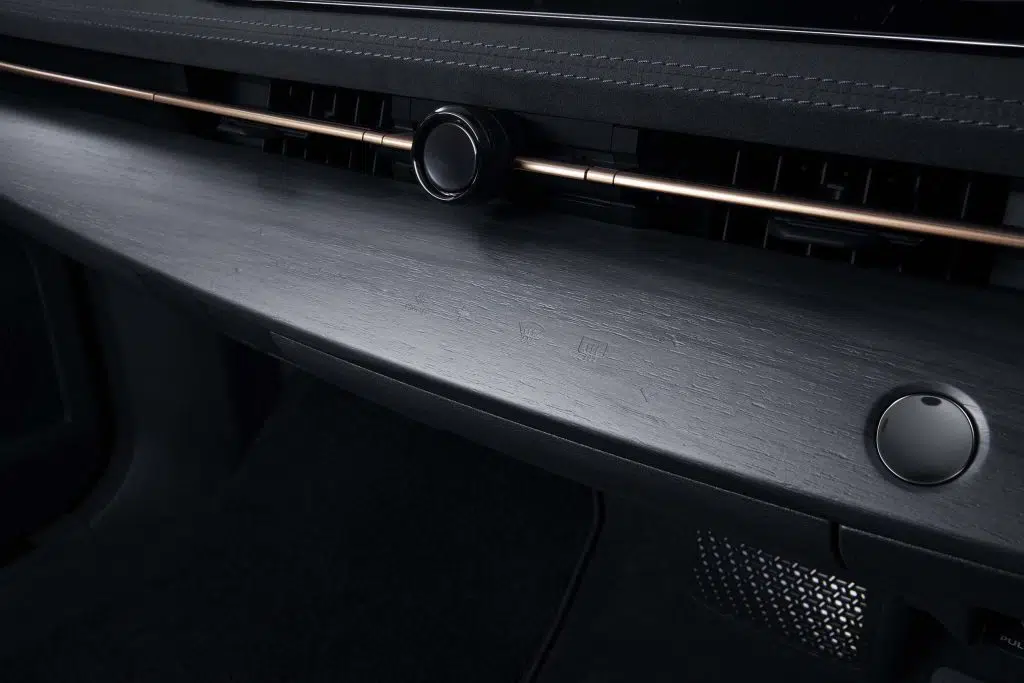
Ο chief designer, Hideki Tago, he explains: "We created a clean space, combining tactile controls with the grain of the wood finish inside. We did this in a way that didn't affect the performance of the controls, allowing us to achieve both functionality and an attractive look.
"By applying wood grain patterns to the plastic panels using the hydro-printing process, we gave the controls a very realistic wood-like feel. At the same time, this allowed the transparent icons to come alive when illuminated."
From designers to engineers
With the final goal of the Ariya design team to have reach, the baton was passed to group of engineerswho took it upon himself to make this science fiction idea. The process started with a exhaustive analysis the technology itself.

Then came the "surgical" adjustment of vibrations and sounds. In fact, "vibration and sound are inseparable", explains the Tomotaka Igarashi, ο engineer which is responsible for the internal development of the HMI (Human - Machine Interface) of the Ariya. "It may seem obvious, but this challenged our team to develop a unique sound that would meet the driver's expectations while designing it to be as enjoyable as possible."
Such a attention to detail in an all-electric crossover is a necessity, as the minimum Audio emitted by the electric drive system means that the sounds emitted by the developed by the construction team will be heard clearly while driving.
The development of tactile controls required every possible scenario To repeatedly tested, to ensure easy use for an easy to use wide range of driving options. This meant extensive testing by people with different finger sizes and nail length, as well as with different button pressure strengths and at a different angle of approach. In addition, the following were tested hands with gloves, in order to ensure that the button is activated.
All about... buttons
This is just one example how design and functionality have been integrated from the outset in the development of the Ariyato offer a completely unique driving experience and level of interaction.
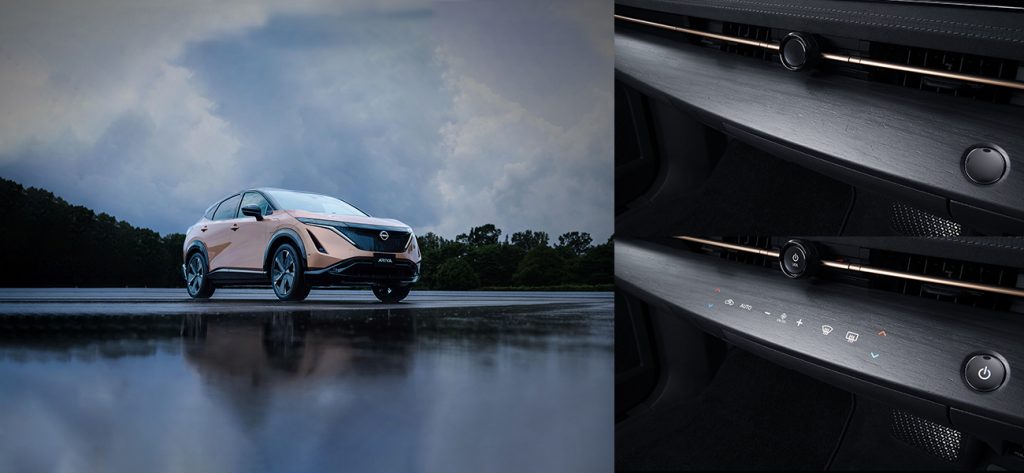
The tactile feedback buttons are grouped into two specific areas of Ariya : In main control panel and in adjustable centre armrest. The goal was not only to integrate the technology in the design of the cabin, as a means of impressing the passengers, but also to give a natural and responsive feel to a wide range of drivers.
After extensive testing, the team installed electrostatic buttons that are not only larger than the traditional haptic controls, but also more widely. This allows for a realistic and intuitive sense for users and also produces a kind of "pressure" with air. This enhances the tactile feedback with the sensation from the Click of a traditional mechanical button, despite the fact that no traditional physical button involved.
By 5 versions of Ariya available for Europe, the all-electric crossover coupé θα ταιριάξει απόλυτα στις ανάγκες του υποψήφιου Ευρωπαίου αγοραστή. Μπορείς να δείς περισσότερα but also να δηλώσεις ενδιαφέρον for the Nissan Ariya, προκειμένου να είσαι από τους πρώτους που θα λαμβάνουν αποκλειστικές ενημερώσεις, πατώντας here!



